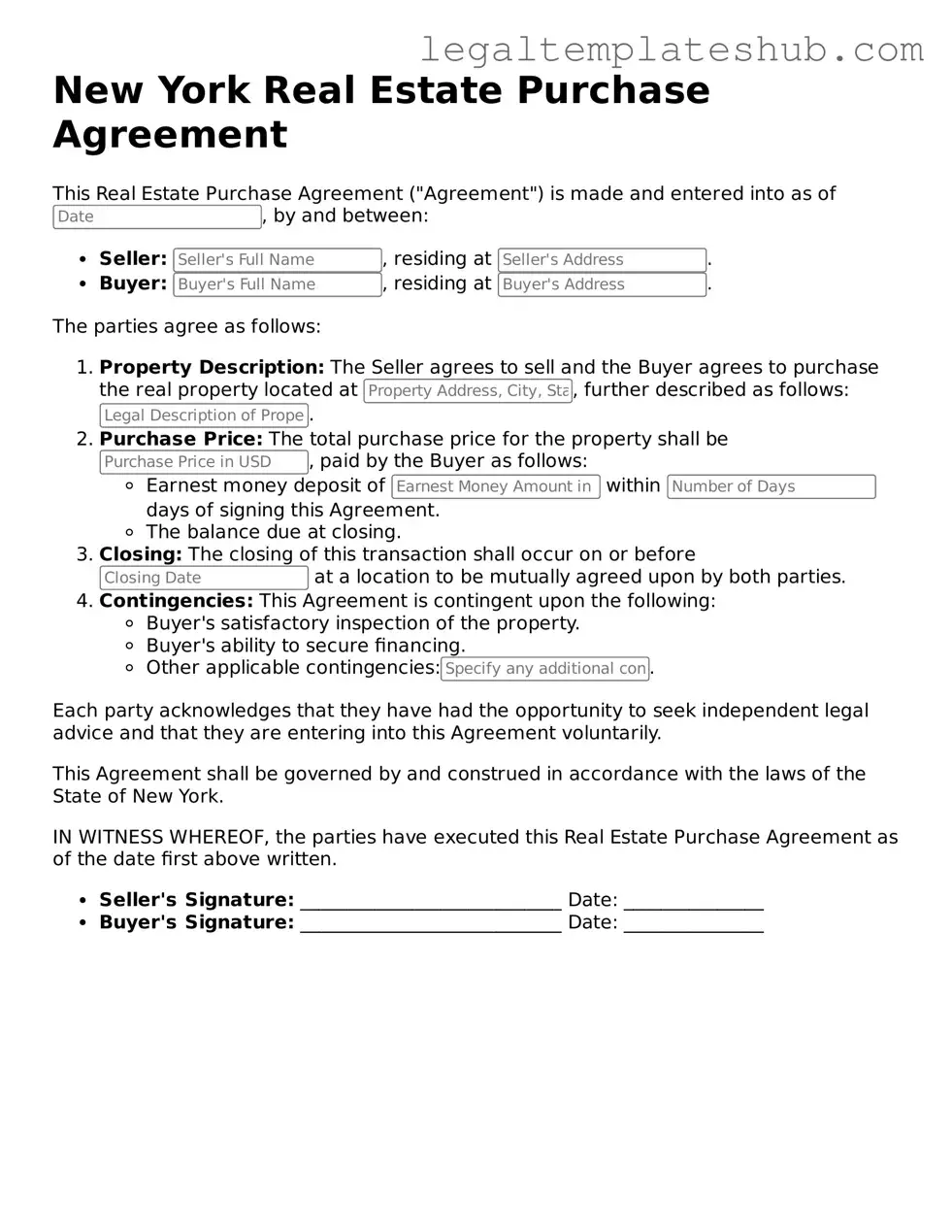Instructions on Filling in New York Real Estate Purchase Agreement
After gathering the necessary information, you are ready to fill out the New York Real Estate Purchase Agreement form. Completing this form accurately is essential for a smooth transaction. Follow these steps to ensure that all required details are provided correctly.
- Identify the Parties: Enter the full names and addresses of the buyer(s) and seller(s) at the top of the form.
- Property Description: Provide a detailed description of the property being sold, including the address, type of property, and any relevant tax identification numbers.
- Purchase Price: Clearly state the agreed-upon purchase price for the property.
- Deposit Information: Indicate the amount of the earnest money deposit and specify how it will be held (e.g., in escrow).
- Financing Terms: Outline the financing arrangements, including any contingencies related to mortgage approval.
- Closing Date: Specify the proposed closing date when the transaction will be finalized.
- Contingencies: List any contingencies that must be satisfied before the sale can proceed, such as inspections or appraisals.
- Signatures: Ensure that all parties sign and date the agreement to make it legally binding.
Once the form is completed, it is advisable to review it carefully for accuracy. After that, both parties should retain copies for their records. The next steps involve negotiating any necessary changes and preparing for the closing process.
